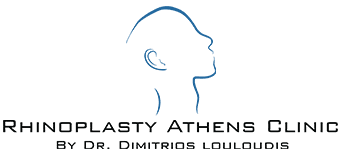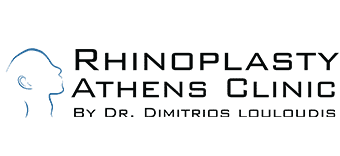In rhinoplasty, there are certainly guidelines and common aesthetic assumptions. My personal philosophy is that every nose is unique. The course is determined by the desire to match it with the other facial features. My primary goal is the ability for perfect breathing and a beautiful, natural look, completely free of surgical scars, harmoniously combined with the rest of our facial features.
Personally, I don’t like big, wide noses. However, my experience has led me to believe that each patient’s nose falls within a different size range that can be achieved. The size of the nose created in the operating room is based on several factors. These factors vary from patient to patient and I do not have a specific aesthetic standard that I apply in each case.
Thus for some patients, it may not be feasible to get a small nose due to the anatomy, thickness of their nose skin or due to complications of a previous rhinoplasty. It might seem ideal for anyone to get the nose they admire on a television star or on a beautiful face of an art photography. But this is not always possible.
Patients with thin skin and a long nose are more likely to get a significantly smaller nose. In these patients their thin skin may shrink over time and wrap a smaller osseocartilaginous skeleton. This shrinkage can take several months or even years.
As a result, these patients are likely to experience disappointment in the early postoperative period, before the swelling of the skin starts to subside and “ shrink-wrap”. Also, if we produce a significantly smaller nose, apart from the disharmony that may occur, it is possible that the skin will never be able to shrink sufficiently, to wrap the new skeleton.
In the pre-operative demonstration of the result on the PC I try to do a thorough study and a very realistic approach, avoiding the overwhelming changes. This avoids the risk of a nose being too much trimmed to such an extent that the skin will no longer be able to shrink to cover the new shape and fall.
There is a tendency in some noses, particularly in long noses with short nasal bones, several years after surgery to pinch the median third and cause nasal breathing difficulty due to insufficiency of the inner nasal valve. To avoid this risk, I tend to strengthen the valve area using cartilage grafts, the so-called spreader grafts.
The open rhinoplasty method that I use, provides me with unlimited abilities to secure these cartilage with permanent stitches. This deliberate overcorrection, may temporarily give the feeling of a bit wider than the ideal middle third, but it gets improved significantly over the months or years while completely avoiding the risk of compromising and pinching the middle third, causing insufficiency of the nasal valves.
Many patients may be impatient and want their nose to look ideal immediately after the removal of the splint. All tissues of the human body have for some time after surgery post operative edema. Our nose cannot be an exception to this rule.
So it is logical that in the immediate postoperative period, our nose will look bigger and wider than ideal. We need to be armed with patience and give the tissues the time they need so that they can beat the swelling and after that the skin can get wrapped around the newly formed osseocartilaginous skeleton of our nose, thereby enhancing the aesthetic effect.
The impatience and the rush of time, is the sole responsible for the multiple revision operations, that some patients undergo. The surgeon, trying to please the impatient patient and provide immediate visual improvement with the reconstructive surgery, eventually leads to an over-reducing intervention covered by the surgical edema, which proves to be temporarily pleasing to the patient. Unfortunately, however, it does not have the requisite aesthetic and functional endurance against the inevitable shrinkage that will be fatal over time.
After each rhinoplasty operation, one needs to have patience, be calm and have faith in the surgeon and provide the surgery with the necessary time to allow the expected recovery. Unless the only thing someone wants is to appear to be perfect right after the operation and ignores the fact of having to have a revision every five to ten years.
In addition, the structural approach with the use of cartilage grafts to enhance nasal valve strength may temporarily create more edema and scar tissue, which takes several months to subside, but gives the required strength to the cartilage wall, not to create retraction and shortness of breath during intense inhalation. It therefore ensures uninterrupted nasal breathing once and forever.
My goal is to create an aesthetic and functional improvement that will continue to change for the better in the months to come, sometimes in the years to come. The changes are small and gradual and it is difficult to see them in our own eyes, one who observes our nose in the mirror every day. I usually tell my patients preoperatively that their nose during the immediate postoperative period will be swollen and larger than the result in the operating room. And the day of removing the splint is far from the day of the final result.
That is why I am used to seeing my patients often enough postoperatively, to monitor the progress of the outcome and to provide advice on the treatment of local edema with massaging, adhesive tape or local drug infusion. In rhinoplasty, the postoperative period is a path that patient and physician walk together to achieve the optimum result.




